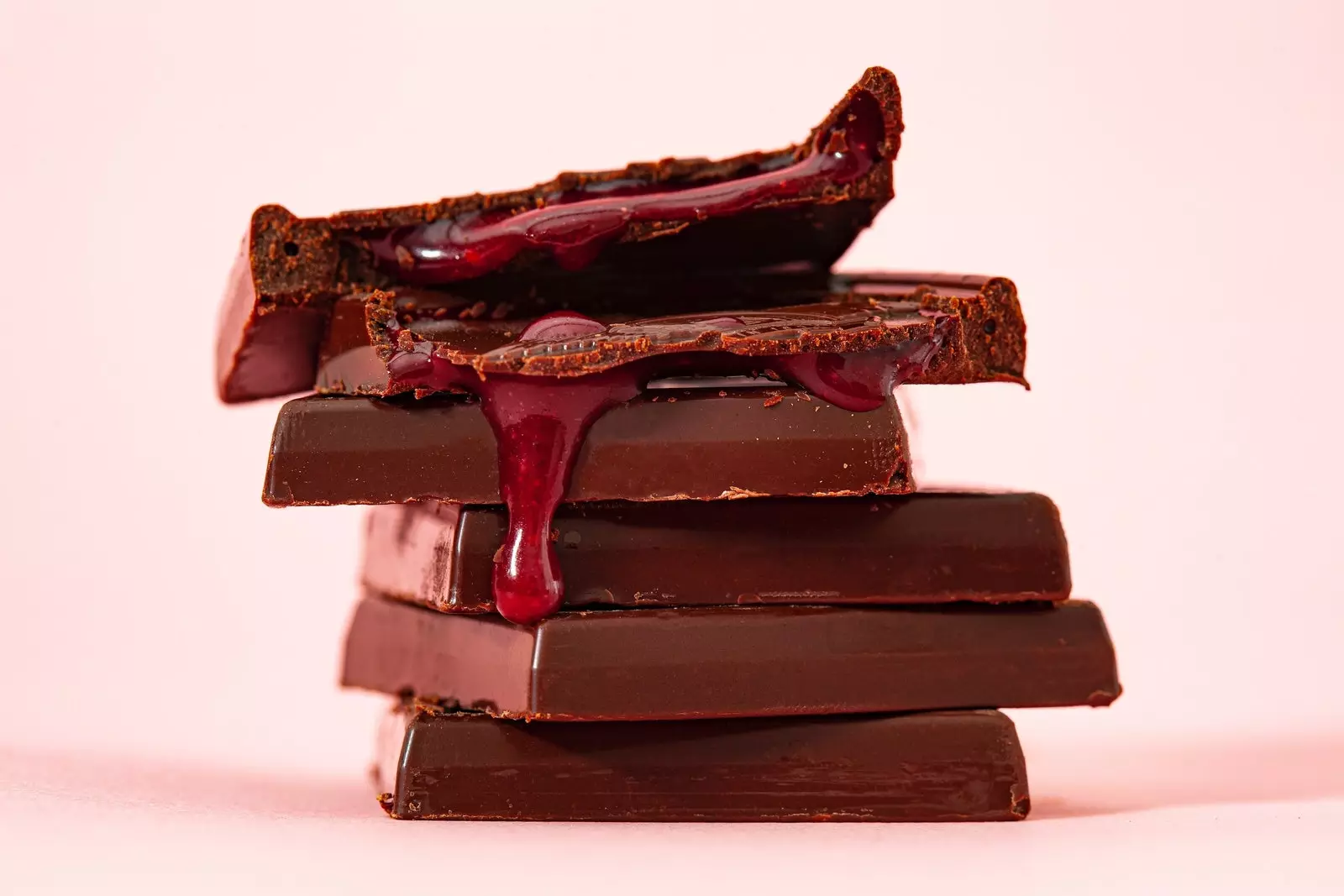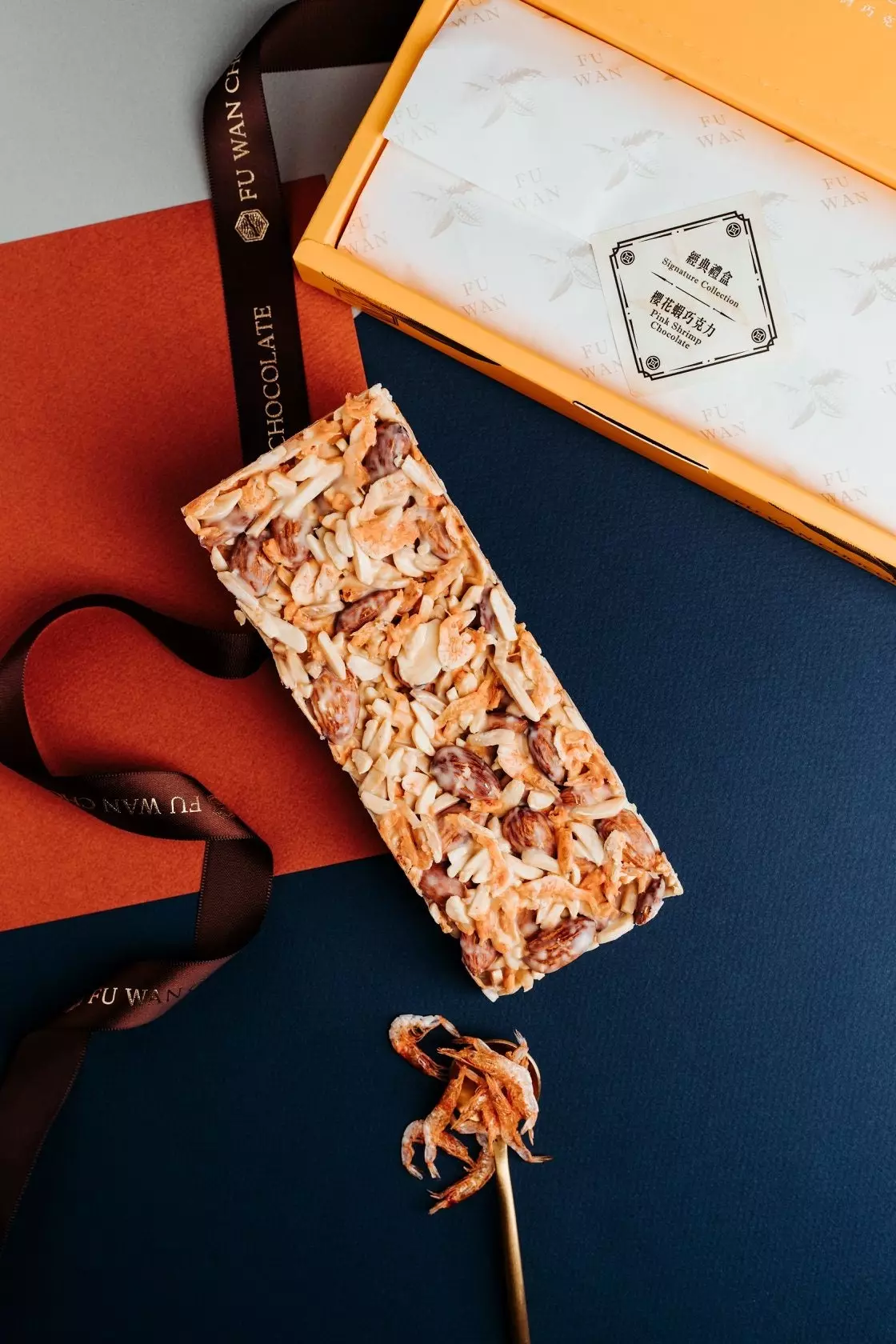
Bean to bar: chocolate is no longer what it used to be (fortunately)
The chocolate bread bar bean to bar you just released Puchero Coffee Roasters in collaboration with the bakery Panic of Madrid It has little or nothing to do with that childish sandwich -or not- in which we skewered a dozen ounces so sugary that they gladly irritated our throats.
On his tablet live a 60% cocoa from India, sugar, cocoa butter and sourdough wheat bread from the renowned Madrid bakery . Nothing more. No trace of cocoa powder, soy lecithin, vanilla or vanillin (this is when the specialists throw their hands to their heads). The bread crunches shyly in the mouth; flowers are guessed, a background of cereal . No, nothing to do with the chocolate bread we were used to.
The team of Utopick (Valencia) with broad beans from Nicaragua and loaves from Jesús Machi. Also Kaitxo in the Basque Country, with white chocolate and carob flour bread from Zalla's award-winning Crosta bakery . They are all chocolate producers bean to bar (from the bean to the tablet) that have come to the origin to buy the best grain at a fair price, to roast it with precision and to make a product that, like the specialty coffee , has nothing to do with what we have eaten for decades as a national snack.
Yes, we talk about cocoa and sugar . Nothing more than that. Sometimes even just cocoa. However, it is not little. And it's already a trend.
“IN KNOWLEDGE IS THE OPPORTUNITY”
Companies such as Utopick, Isabel Artisan Chocolates, Pangea or Kaitxo have spearheaded this movement in the country. The work of people who have made the leap from other sectors such as Puchero or La Sonora (coffee), Kankel (pastry), Pol Contreras or Origen de Iván Pascual (haute cuisine) or Rafa Gorrotxategi (artisan chocolate) have given continuity, and the organization of festivals such as Basquetxok in Balmaseda (Vizcaya) or ChocoMad in Madrid have generated the breeding ground for others to embark on the adventure of rescue this food product from the jaws of commercial industry.
There are several ways to produce chocolate, but the bean to bar It's not exactly the easiest. During the whole process of sorting, roasting, husking, grinding, tempering and shaping , the producers of this type of chocolate do not lose sight of the origin of the cocoa "to respect the organoleptic qualities and the personality of each one as much as possible ", Explain Monica Miguez , journalist specialized in this sector.
Still, they are tightrope walkers who play with acids and sweets through roasting to get their own profiles that define their brands. And it is that “in the roasting is the flavor”, he comments Marco Bergero from the Puchero roaster . In their case, their knowledge of coffee has helped them to achieve bean-to-bar profiles. Everything is modulated by hand. Everything is tested and tasted hundreds of times. For Monica Miguez roasting is an art ” and they are true alchemists who work “to offer creations that bring something new to the chocolate scene”.
An art that increasingly interests the chocolate consumer whose profile, like that of wine, beer or coffee, has changed "but continues to be part of a niche market," he concludes. Rachel Gonzalez , professional taster, member of the International Institute of Chocolate and Cocoa Testing in the United Kingdom and co-founder of the brand Kaitxo . She has it clear: "In knowledge lies the opportunity."
For this reason, in 2019 the Association for the Promotion of Artisan Roasting Bean to Bar Chocolate in Spain . Among its objectives, that of dissemination: “The Spanish consumer needs to know the term and the product; what is bean to bar chocolate and what are its differences with other products that we can find in the market”, explains Míguez, also a member of the association.
WHAT THE PERCENTAGES HIDE
It's hard to imagine that a bar of chocolate can bring bad news. At most, that can help digest them. However, here is one: the percentage of cocoa in a tablet only reveals the amount of cocoa with which it is made, not its quality.
As obvious as this fact may seem, the commercial chocolate industry has managed to make us overlook it and throw ourselves into that percentage that monopolizes the wrappers with authenticity and health. It is enough for a third party to appear in discord, pleasure, so that the shopping carts are filled with tablets with 70%, 80% or up to 99% cocoa . Marketing absolves us of our sins.
For a year, the big industry has begun to advertise itself with the speech of the bean to bar : "Until now cocoa beans had never appeared on the packaging," says Victoria de la Torre, president of the Association for the Promotion of Bean to Bar Chocolate and co-founder of The Chocolate Club , the main distributor in Spain. Many manufacturers have even made the term their own.
“Obviously, all chocolates start at the beans and end up in bar , but they do not respond to what it actually represents: with which beans it has been elaborated, how they have been cultivated and harvested , how they have been transformed, with what ingredients and under what conditions they are marketed”, says de la Torre. This is why the association is working for institute a federation at European level that promotes the regulation of the term by the authorities as already happened with the bakery sector and sourdough in 2019.
IS THE BEAN TO BAR HEALTHIER?
Health also comes into play here: dark chocolate has antioxidant properties thanks to its high content of flavonoids, it is related to a decrease in blood pressure and a reduction in blood glucose. Also, " the consumption of sugar and carbohydrates favors the entry of tryptophan into the brain and that it produces serotonin ”, comments Raquel Bernacer, dietitian-nutritionist and collaborator of various media.
Although Ella Bernacer alludes to the fact that more studies are needed to prove that this momentary effect of happiness that consumers say they feel when drinking chocolate is related to it, does not deny that chocolate produces pleasure for several factors, such as " the temperature at which its fat melts, which is the same as what we have in our mouths , until the scents it releases , its degree of sweetness or its components, some of which are stimulants such as theobromine, which has an action similar to caffeine.
Thus, it is not surprising that during the confinement that began in March, the consumption of chocolate bars will reach up to a 77% increase in week 16 of the year compared to the same period of 2019 according to a report from the Ministry of Agriculture and Fisheries. Victoria de la Torre confirms that chocolate sales bean to bar have increased in El Club de Chocolate so far in 2020. It is about that human need to give in to pleasure as an escape and also as a celebration . And nothing like (good) chocolate to make that trip back.
However, although nutritionally the bean to bar does not provide more than any other chocolate, “it is true that we do not eat just to feed ourselves; also to delight us, so it makes more sense to taste something of quality , that makes us really enjoy, that a product in which enjoyment has not been sought but rather the 'hook' of the person who consumes it through large amounts of sugar and fat", analyzes Míguez.
TRANSOCEANIC ORIGINS, LOCAL INGREDIENTS
Let's leave behind the classic chocolate with hazelnuts . Now is the time to innovate and, as in many gastronomic aspects, to turn towards the local, however far-fetched it may seem. One of the latest elaborations of the Korean Warren Hsu (of Fu Wan Chocolates) it was a white chocolate with prawns , although it also has other less risky versions such as its 62% cocoa tablet with tea that has received several international awards.

White chocolate with Fu Wan prawns
Like any author, Spanish bean-to-bar chocolate producers also seek to see themselves reflected in these small melting works. They and their places of origin. In addition to the one with carob bread -who promise to return-, the Biscayans Kaitxo have a 75% tablet with Ezpeleta peppers (French Basque Country) or one of white chocolate made with pistachios from Bronte (Italy) caramelized and salted with Añana salt (Álava) that has received two awards at the International Chocolate Awards 2020. Mayte Sánchez, from Maychoco, works with products such as the Axarquia mango from Malaga. At Kankel Cacao they make truffles with red and white wine from La Rioja . Rafa Gorrotxategui, the classic Basque master chocolatier, has also launched himself into the bean to bar and has made bars such as the 70% Venezuelan chocolate with basque cider.
Still, one of the most important goals of bean to bar producers is to “ reflect the personality of the beans we work with ”, point from Kaitxo. The most rewarding prizes are therefore those that are received for those tablets to which no ingredient has been added, for those Peru or Tanzania at 75% : "It means that you have worked with cocoa very well and even more so if it is a cocoa that others are also using in Europe," he says by phone Rachel Gonzalez , nose and mouth of this brand of bean to bar chocolates. And eyes and ears and touch, because when it comes to tasting chocolate -and she knows this, she has been part of international juries- “you have to use all your senses”.
The key, as in everything, is to try it. “When you do it, there is no turning back”, concludes the journalist Mónica Míguez . They are more expensive, yes. are marketed tablets from 4 to 12 euros approximately , but “it is something that has so many nuances and so many aromas that by the fourth ounce the palate is already saturated. A chocolate bar of this type you have to take it little by little, melt it in the mouth to get all its flavors”. Like a good wine, like a good coffee. Like the good things in life.
